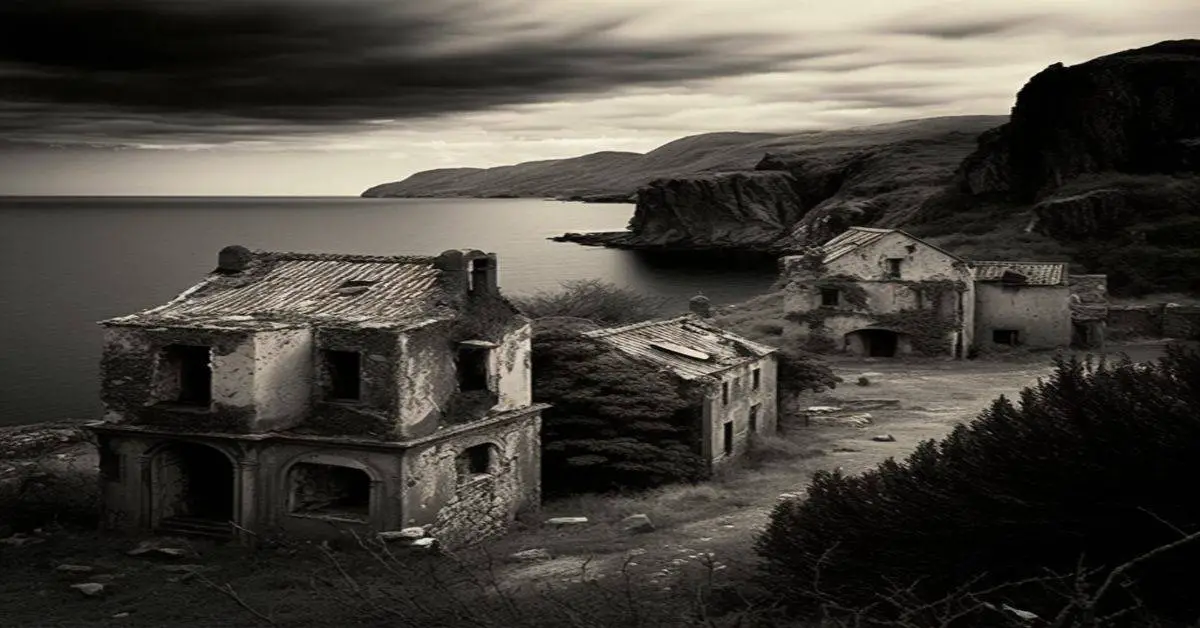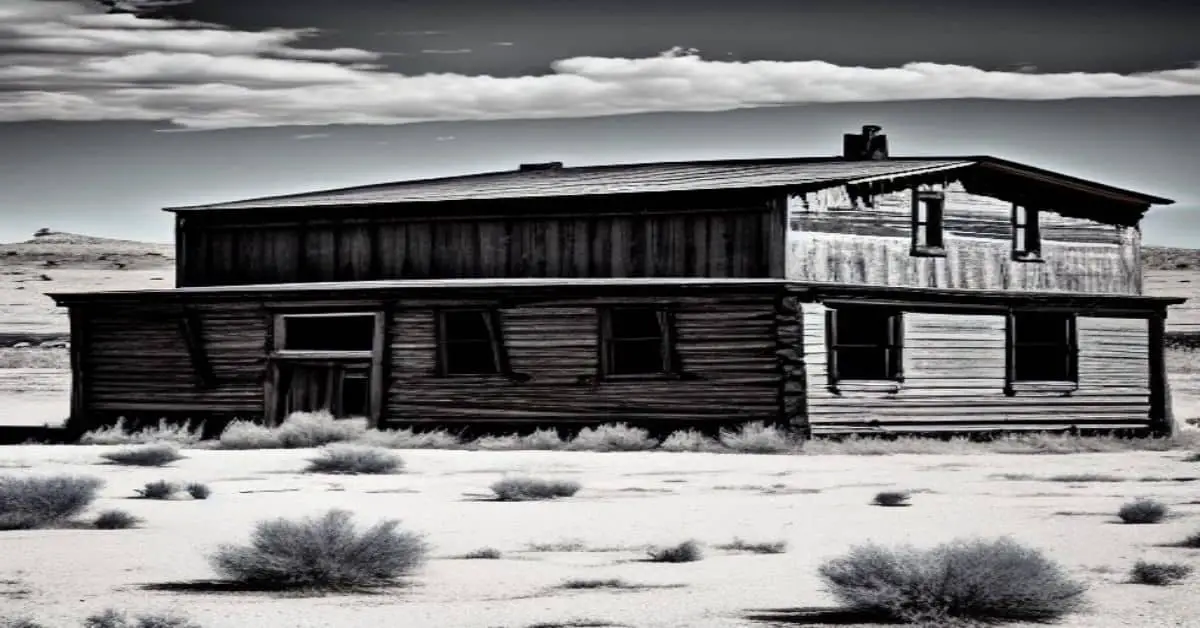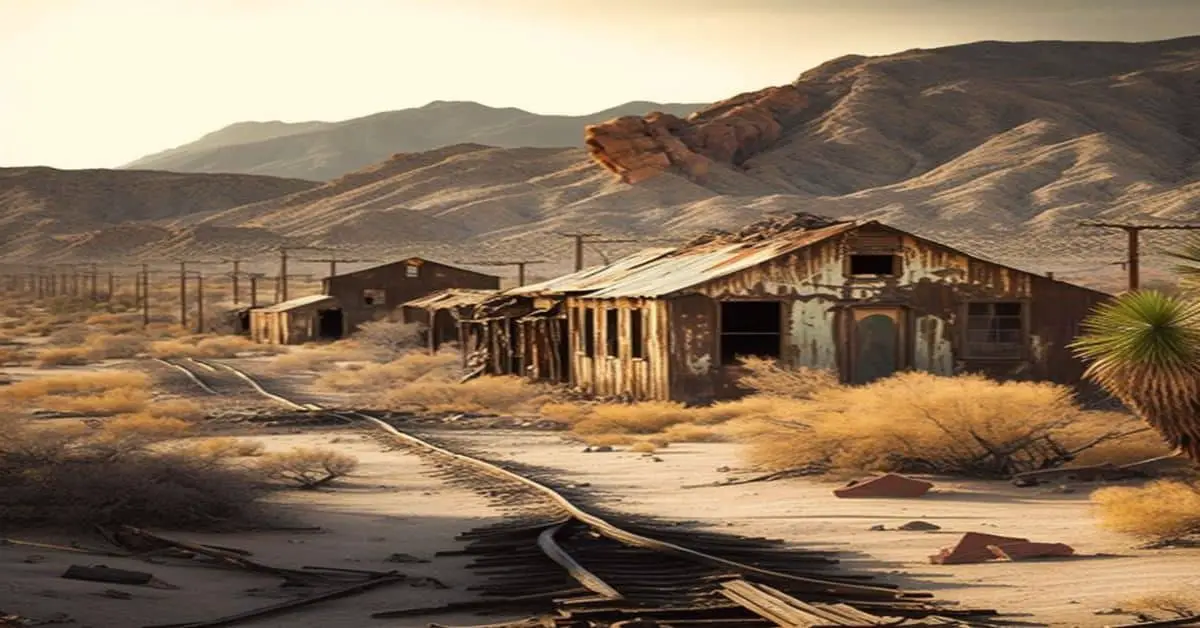Located about 30 miles east of Flagstaff, Coconino County, Arizona, Two Guns is a ghost town with a rich history dating back to the 19th century. Named after the notorious Two Gun Miller, the town was once a major crossing point for Canyon Diablo and a thriving tourist attraction on Route 66.
Today, the remains of Two Guns include various ruins associated with its past, including a zoo and various commercial enterprises. Despite being fenced off and inaccessible to the general public, the old stone buildings and newer structures covered in graffiti still offer a glimpse into the town’s fascinating history.
Two Guns was once a bustling hub of activity, and its remnants are a testament to its significance in the region’s history. In this article, we will explore the history and remains of Two Guns, AZ, and take a step back in time to a place that was once a center of tourism and commerce.
Key Takeaways
- Two Guns is a ghost town located in Coconino County, Arizona, about 30 miles east of Flagstaff and has its own exit on I-40.
- Two Guns was a tourist trap on Route 66, with a gas station, overnight accommodations, a food emporium, and a zoo, but went into decline with the building of Interstate 40.
- The site is now fenced off and not accessible to the general public, but there are extensive ruins of 20th-century commercial enterprises, 19th-century old national highway, and some Indian ruins.
- Two Guns was a place where Grandpa Roden lived and raised up his children, and there are stories of Uncle Bill establishing his own range and branding his cattle and horses pitchfork.
Location and History
Situated in Coconino County, Arizona and approximately 30 miles east of Flagstaff, Two Guns is a ghost town with a rich history that spans various eras. It was named after Henry E. Miller, who called himself Two Gun Miller. The town was also the site of a major conflict between the Navajos and the Apaches in the 19th century. Its modern history begins when it was recognized as an easy place to cross Canyon Diablo. Two Guns went into decline with the construction of Interstate 40.
Despite its decline, Two Guns was a popular tourist destination on Route 66, boasting a gas station, food emporium, and zoo. The remains of numerous ruins and buildings associated with various eras of the town’s past can still be seen today. These include the abandoned modern gas station and campground buildings visible from the Interstate, extensive ruins of 20th-century commercial enterprises, and Indian ruins.
Although it is no longer accessible to the general public and is fenced off, Two Guns remains a fascinating site to explore, offering insights into the history and culture of the region.
Tourism and Attractions
The former tourist trap in Coconino County, Arizona, offers visitors the chance to view the abandoned gas station and campground buildings along the Interstate and extensive ruins associated with various eras of commercial enterprises and Indian settlements.
One of the most notable attractions at Two Guns is the old bridge across Canyon Diablo, which was part of the National Trail and Route 66. This bridge still stands and gives visitors a glimpse into the past, when Two Guns was a bustling stop along the famous highway.
Exploring the ruins at Two Guns is a fascinating experience, as it allows visitors to learn about the various eras of the town’s past. The abandoned gas station and campgrounds are visible from the Interstate, but visitors can also access the old stone buildings and Indian ruins.
While the site is now fenced off and not accessible to the general public, there are open gates in the barbed-wire fences that allow visitors to explore the remains. However, it’s important to note that there are no safety railings, park rangers, or concession stands, so visitors should exercise caution when exploring the site.
Uncle Bill and Grandpa Roden
Exploring the past of Two Guns reveals the area’s rich history, including the stories of Uncle Bill and Grandpa Roden, who played a significant role in shaping the region’s cattle industry.
Uncle Bill’s old horse camp was an essential part of the Two Guns cattle range, which covered the area around the old meteor crater and south to the rim of the Mogollon Mountains. According to Uncle Perry, who used to live at Two Guns, Uncle Bill established his own range and branded his cattle and horses pitchfork. The country around the horse camp was known for its excellent grass, keeping the cattle fat and healthy.
After Grandpa Roden’s death, Uncle Bill inherited the ranch and horses, and the cattle were divided among the girls. My mother’s cattle were branded APL, which my dad and mom later sold to my Uncle Charlie Chapman. They bought more cattle branded with the cross ell and eventually drove them west to Santa Rosa, New Mexico, and later to Arizona.
The history of Uncle Bill and Grandpa Roden is a testament to the importance of the cattle industry in Two Guns and the role it played in shaping the area’s economy.
Accessibility and Climate
Access to the abandoned site of Two Guns is possible through open gates in the barbed-wire fences, allowing visitors to explore the ruins of the once-thriving tourist destination. However, visitors should be aware of the heavy vandalism and lack of safety measures. The newer (20th century) buildings are heavily graffitied and vandalized, while the old stone buildings remain intact and unmolested. No safety railings, park rangers, or concession stands are on the site.
Nonetheless, visitors can still enjoy outdoor activities in the area, such as hiking and photography. The climate in the area is characterized by cold winters and hot summers, making it best to visit Two Guns during the fall or winter. The cold winter climate ensures visitors must dress warmly when exploring the ruins. During the summer, visitors should bring plenty of water and sunscreen to protect themselves from the hot sun.
Despite the challenging climate and lack of amenities, Two Guns remains a fascinating destination for those interested in the history of the American West. With its accessible ruins and beautiful outdoor surroundings, the site offers a unique opportunity to experience the past and present of this once-thriving ghost town.
Frequently Asked Questions
What led to the decline of Two Guns after the building of Interstate 40?
The construction of Interstate 40 had a significant impact on Two Guns, leading to an economic downturn and subsequent decline. The new highway diverted traffic away from the town, causing its tourist industry to suffer and ultimately resulting in its abandonment.
Are there any plans to restore or preserve the remains of Two Guns?
Efforts are underway to preserve the remains of Two Guns, AZ, but there is no restoration funding currently available. The site is fenced off to prevent vandalism and theft, and there is a caretaker to ensure its protection.
What kind of animals were kept in the zoo at Two Guns?
Like a time capsule frozen in time, the zoo at Two Guns exhibited various animals such as mountain lions, bears, and reptiles. The zoo was a popular attraction in the town’s history, showcasing the diversity of wildlife in the area.
Were there any notable events or individuals associated with Two Guns in the 20th century?
Two Guns, AZ has a notable place in Arizona’s Wild West History, but no famous outlaws were associated with the town in the 20th century. Its decline coincided with the building of Interstate 40.
How has the landscape around Two Guns changed over time?
The landscape around Two Guns, AZ has changed over time due to geological formations and erosion patterns, as well as the impact of human activity. The construction of Interstate 40 led to the decline of the town, and the site remains fenced off to prevent vandalism and theft.


